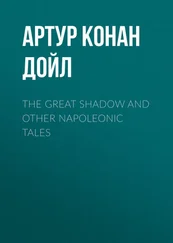I hope that the book will be useful for all the readers to find the relevant information on the latest research and advances in effective use of nanotechnology in agriculture.
Avinash P. Ingle
1 Nanotechnology as a Smart Way to Promote the Growth of Plants and Control Plant Diseases: Prospects and Impacts
Heba Mahmoud Mohammad Abdel‐Aziz and Mohammed Nagib Abdel‐ghany Hasaneen
Botany Department, Faculty of Science, Mansoura University, Mansoura, Egypt
Nanotechnology is a modern and creative science which involves the designing, manipulation, and use of nanoscale materials (Ali et al. 2014; Agrahari and Dubey 2020). The term “nano” is a Greek word which actually means “dwarf,” and when it is used to describe materials, it is supposed to have at least one dimension of 100 nm or less. Today, nanotechnology has entered in every aspect of day to day life (Zulfiqar et al. 2019). In medicine, nanotechnology has made breakthrough improvements as a means of smart drug delivery systems and many other applications. When it comes to agriculture field, research is still under way to discover the applications of nanomaterials to improve plant growth and control plant diseases (Ali et al. 2014; Zulfiqar et al. 2019; Agrahari and Dubey 2020).
Nanomaterials or nanoparticles can be manufactured using different ways, such as top‐down and bottom‐up approach. The production of nanomaterials through top‐down approach involves the breaking down of bulk materials into nanosized structures or particles. The disadvantage of this method is low control on the size of nanoparticles and a greater amount of impurities. On the contrary, bottom‐up approach of nanoparticles synthesis involves building up of a material from the bottom, i.e. atom‐by‐atom, molecule‐by‐molecule, or cluster‐by‐cluster. It is usually a chemically controlled synthesis process, so this method has better control on particle size and also reduces impurities. In addition, nanoparticles can be biologically manufactured which is also called as biomanufacturing method. Different biological systems such as plants, fungi, and bacteria can be used for this purpose. The advantage of this method is the greater control over the toxicity and size of the particle (Heikal and Abdel‐Aziz 2020). The global population is rapidly increasing and is supposed to reach 9.6 billion by 2050 leading to many concerns (Zhang et al. 2015). The major problem will be how to provide food to such growing mass population (Zulfiqar et al. 2019). On the one hand, concerns related to soil fertility are getting worse year after year and the development of urban activities continuously decreasing the cultivated areas. On the other hand, problems related to plant pathogens and their control are also major issues in current scenario (Chhipa 2017). Therefore, question arises that how to produce more food when there are less cultivated lands and nonfertile soils? One of the recent approaches proposed by scientists all over the world is the introduction of nanotechnology in agriculture to solve these problems. The introduction of nanotechnology to agriculture may provide solutions to improve plant growth through the applications of various nano‐based agrochemicals such as nanofertilizers, nanoherbicides, and nanoantimicrobials. In addition, utilization of smart Nanodevices like nanosensors can also help in the detection of pathogens and heavy metals in soil. Thus, nanotechnology converted conventional farming into precision farming (Raliya et al. 2018).
Different nanoformulations like nanofertilizers composed of either macronutrients or micronutrients have been tested in many research works. Some studies showed positive effects on growth and productivity of tested plants and some showed negative impacts especially when used in higher concentrations. Considering these facts, the present chapter is focused on detail review of all such studies. The use of nanotechnology in the management of plant diseases showed promising results having significant impacts on different plant pathogens such as insects, bacteria, fungi, or even viruses. Like every new technology, nanotechnology also has its merits and demerits. The concerns of the use of nanotechnology in agriculture arise from toxicity issues, and their hazardous effects to human health and environment are also discussed in this chapter.
Nanofertilizers being used in agriculture to increase the efficiency of nutrient uptake by plants. The term nanofertilizer means any nanomaterials which has potential to enhance the nutrient uptake in plants. They can be nanoforms of different fertilizers like nitrogen (N), phosphorus (P), and potassium (K) with other macro‐ or micronutrients (Singh et al. 2017; Bajpai et al. 2020). There are three proposed types of nanofertilizers: (1) nanofertilizers (nanoparticles of fertilizers), (2) nanocoatings (traditional fertilizers being loaded on nanoparticles), and (3) nanoadditives (traditional fertilizers with additives in the nano form) (Naderi and Danesh‐Shahraki 2013).
1.2.1 Methods for Application of Nanofertilizers
Nanofertilizers can be applied by three different methods discussed below:
In this method, seeds are soaked in an emulsion containing nanoparticles before being put in soil. This method was found to be best suited for dormant seeds (Abdel‐Aziz et al. 2019).
Incorporation of nanofertilizers in soil can be done in two ways: either by mixing solid nanoparticles with soil before cultivation or through addition of nanofertilizers to irrigation water and being given to the plant at times of irrigation (Hasaneen et al. 2016).
1.2.1.3 Foliar Application
Nanoemulsions of nanofertilizers are being used as sprays to foliar products of plants either in seedling or early vegetative stages (Abdel‐Aziz et al. 2019).
From several studies, it was suggested that foliar application is the best method to apply nanofertilizers to plants. Seed priming with nanofertilizers could be toxic to embryo cells of seeds and therefore seeds abort to germinate. On the other hand, soil incorporation of nanofertilizers fails to give the desired target because of the presence of soil microflora which could easily degrade and decompose the tiny nanofertilizers in soil (Abdel‐Aziz et al. 2019).
1.2.2 Possible Ways for Uptake and Translocation of Nanofertilizers in Plants
When nanofertilizers are introduced in soil, they are supposed to come in contact with root hairs and get absorbed by them. Further, thus absorbed nanofertilizer is expected to reach root epidermal tissues and then move deep to reach xylem vessels, followed by their transport to every part of the plant (Tripathi et al. 2017). When nanofertilizers are applied through foliar spray, they are supposed to come in contact with stomatal openings and tiny pores in the epidermal tissue. From where they enter and move deep into the leaves tissue to reach to the phloem tissue. Then, from the phloem they are being translocated to every part of the plant (Abdel‐Aziz et al. 2016, 2019).
1.2.3 Macronutrient Nanofertilizers
Macronutrient nanofertilizers are fertilizers which provide the nutrients that the plant needs in large amounts such as nitrogen (N), phosphorus (P), potassium (K), calcium (Ca), magnesium (Mg), and sulfur (S) (Ditta and Arshad 2016; Zulfiqar et al. 2019). It is proposed that the need to apply macronutrient fertilizers will increase by the year 2050, and it may reach to 265 million tons (Chhipa 2017; Adisa et al. 2019). The high ability of penetration and the high surface area of nanoparticles make them more efficient to release the nutrients in controlled manner compared to traditional fertilizers. Considering these facts, nanofertilizers with potential of slow or controlled release of nutrients being developed from macronutrients. For example, nitrogen slow release nanofertilizer was developed from urea‐modified hydroxyapatite by Kottegoda et al. (2017) and evaluated their efficacy. The results obtained showed that initially nitrogen release from the developed nanofertilizer (urea‐hydroxyapatite nanocomposite) is rapid; however, later its slow release was continued till the 60th day from its application. This application of nitrogen nanofertilizer reported to increase rice yield even at 50% lower concentrations than traditional urea fertilizer (Kottegoda et al. 2017).
Читать дальше












